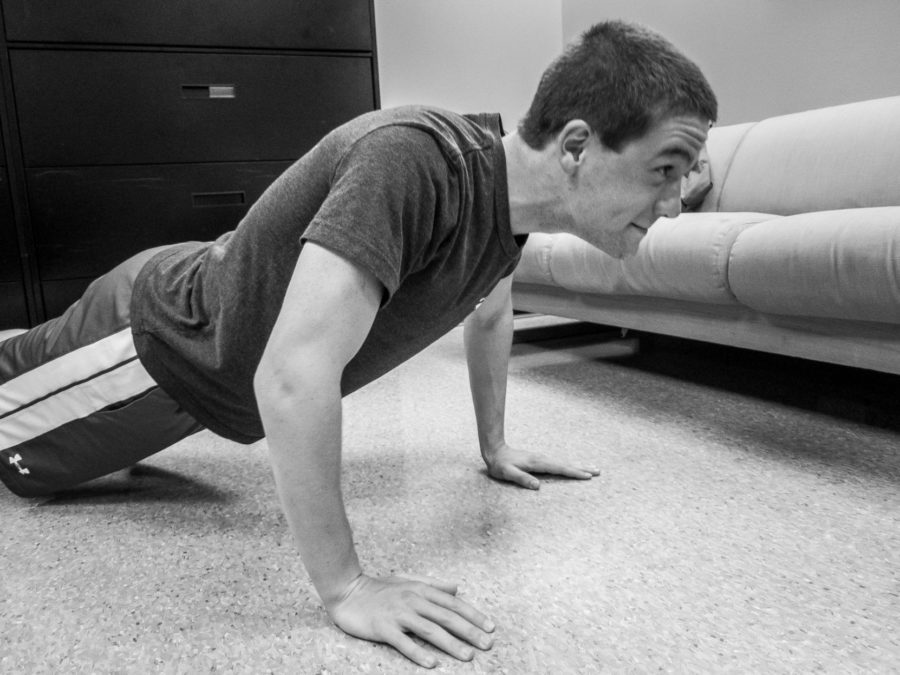The ultimate dorm workout for combatting the freshman 15
Everyone is familiar with it — the 15 extra pounds some freshmen gain with adjustment to being on campus and away from home.
But how do students keep those 15 pounds from following them through college, or from happening at all?
There is the Recreation Center on campus as well as plenty of club sports to choose from. But for busy Oakland University residents there’s another way to fight the flab in just 15 minutes.
BJ Gaddour, an Amherst College alum and consultant for Men’s Health, said that doing just 15 minutes of bodyweight exercise a day with nothing more than a chair and wall can produce great results.
Gaddour’s workouts consist of squats, pushups, wall-sits, knee-ups, and a host of other activities designed to elevate your heart rate in even the smallest of spaces.
West Virginia University’s Center of Health agrees that a short, daily bodyweight exercise routine can help one stay in shape and perhaps shed extra pounds.
WVU says that there are three components to a successful workout: aerobic exercise, strength training and stretching.
Doing a simple set of burpees, adding in some wall squats, and following with a stretch, will give exercisers all three elements, providing a balanced workout in next to no time while simultaneously requiring very little space.
WVU suggests people can use their bed and even a towel as a resistance strap in addition to a chair and wall for their workout.
OU Rugby Club president and club sports program assistant Ted Tansley agreed that body weight exercises are a great way to work out at school.
“Bodyweight exercising is an excellent way to get started in working out,” he said. “In my experience, I significantly improved my squatting from doing it at home without weights.”
Tansley also suggested that students who are injured and are used to exercising regularly at the Recreation Center or in the form of a sport can benefit greatly from a quick bodyweight dorm room workout.
“Bodyweight exercises are great for maintaining (your) strength and gaining more endurance for when you’re ready to get back onto the field,” Tansley said.



